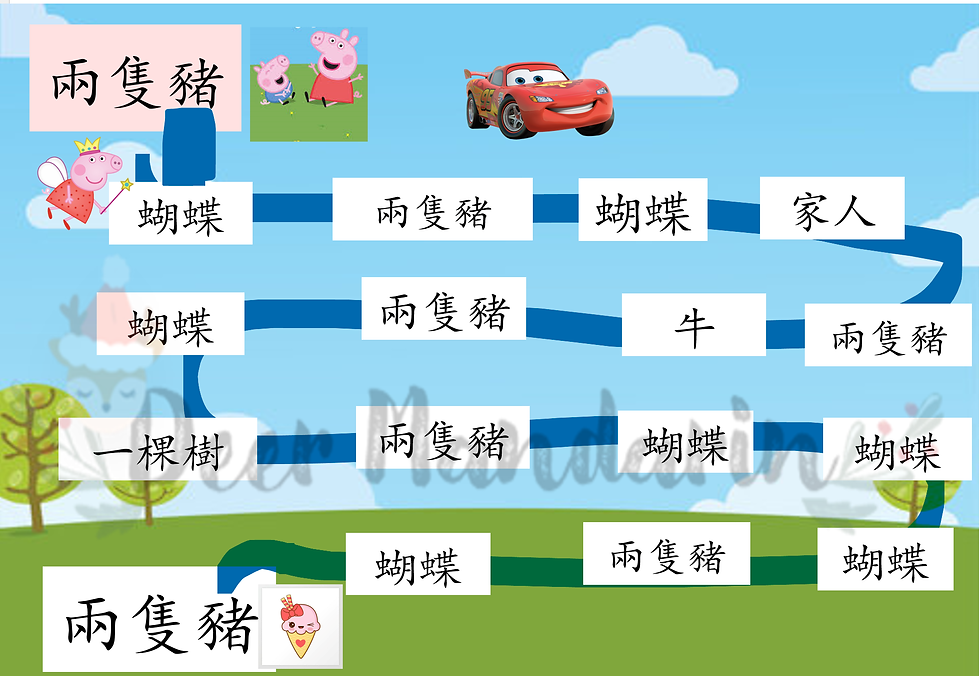Zhuyin or Pinyin? Which one should you learn?
- Deer Mandarin
- Jul 15, 2024
- 3 min read
Updated: Jul 16, 2024
Pinyin and Zhuyin are both systems used to represent the sounds of Mandarin Chinese, but they use different methods of transcription:
Pinyin (拼音):
System: Pinyin is a romanization system that uses the Latin alphabet to represent the pronunciation of Mandarin Chinese characters.
Development: Developed in the 1950s and adopted officially by the Chinese government in the 1970s.
Usage: Widely used in mainland China, Singapore, and other Chinese-speaking communities around the world. It's commonly used in textbooks, dictionaries, language learning materials, and for inputting Chinese characters on computers and smartphones.
Example: The character 你好 (nǐ hǎo) is romanized as "ni hao" in Pinyin, with tone marks indicating the tones.
Zhuyin (注音符号 or ㄓㄨˋ ㄧㄣ):
System: Zhuyin, also known as Bopomofo, is a phonetic alphabet system used for transcribing Mandarin Chinese phonetically.
Characters: Consists of 37 characters, including initial consonants, vowels, and tones.
Usage: Mainly used in Taiwan, where it is the official phonetic system for teaching pronunciation in schools and in dictionaries.
Example: The character 你好 (nǐ hǎo) is represented as "ㄋㄧˇ ㄏㄠˇ" in Zhuyin, with each Zhuyin symbol corresponding to a specific sound or tone in Mandarin.
Mandarin Pinyin and Zhuyin Chart
📌Key Differences:
Pinyin uses the Latin alphabet with diacritical marks to indicate tones, while Zhuyin uses symbols specifically designed for Mandarin Chinese sounds.
Pinyin is more commonly used internationally and is the standard system for romanizing Mandarin, whereas Zhuyin is primarily used in Taiwan.
Pinyin is often preferred by learners due to its familiarity with the Latin alphabet, while Zhuyin is favored in Taiwan for its accuracy in representing Mandarin phonetics.
Both systems serve the purpose of aiding in pronunciation and literacy of Mandarin Chinese, depending on regional preferences and educational systems.
✅Join Deer Mandarin Classes and we will complete Zhuyin or Pinyin Courses in 12 sessions.
Pinyin
👍🏼Pros:
Widely Used Internationally: Pinyin is the most commonly taught and used romanization system for Mandarin Chinese, especially outside of Taiwan.
Familiar Alphabet: Uses the Roman alphabet, making it easier for those who are familiar with these letters.
Official Romanization System: Pinyin is the official system used in mainland China for teaching Mandarin and for most Chinese language learning materials.
Typing: Most Chinese input methods on computers and smartphones are based on Pinyin.
Cons:
Tone Marks: Requires learning tone marks (ā, á, ǎ, à) which can be tricky for beginners.
Zhuyin (Bopomofo)
👍🏼Pros:
Phonetic Precision: Some argue that Zhuyin represents Chinese pronunciation more precisely than Pinyin.
Foundation for Native Speakers: Widely used in Taiwan to teach children to read and pronounce Mandarin, serving as a bridge to learning Chinese characters.
Less Ambiguity: Since it doesn’t use Roman letters, there’s less confusion with English pronunciation.
Cons:
Less International Use: Primarily used in Taiwan and not as widely known or taught outside of Taiwan.
Different Symbols: Uses a unique set of symbols, requiring extra effort to learn these new characters.
💡Recommendations
For Beginners or International Learners: Pinyin is usually the best choice due to its widespread use and easier initial learning curve.
For Learning Chinese in Taiwan: Zhuyin might be more beneficial, especially if you plan to live or study there for an extended period.
⭐If your goal is to type in Chinese, learning Pinyin is essential due to its use in most input methods. However, if you're particularly interested in the Taiwanese educational system or resources, learning Zhuyin can be advantageous.





Comments